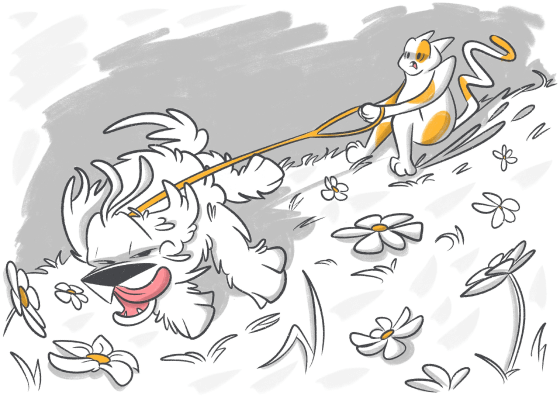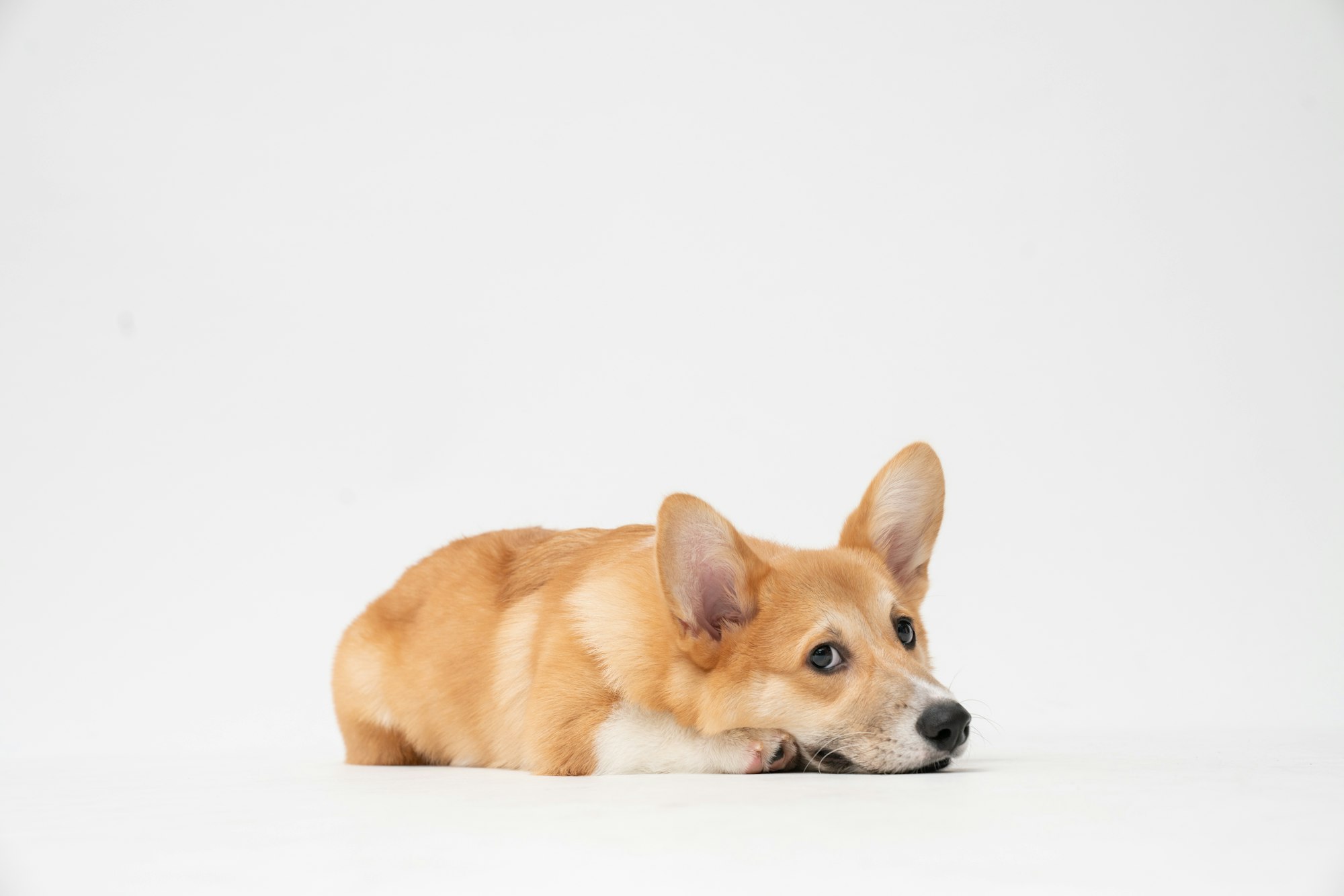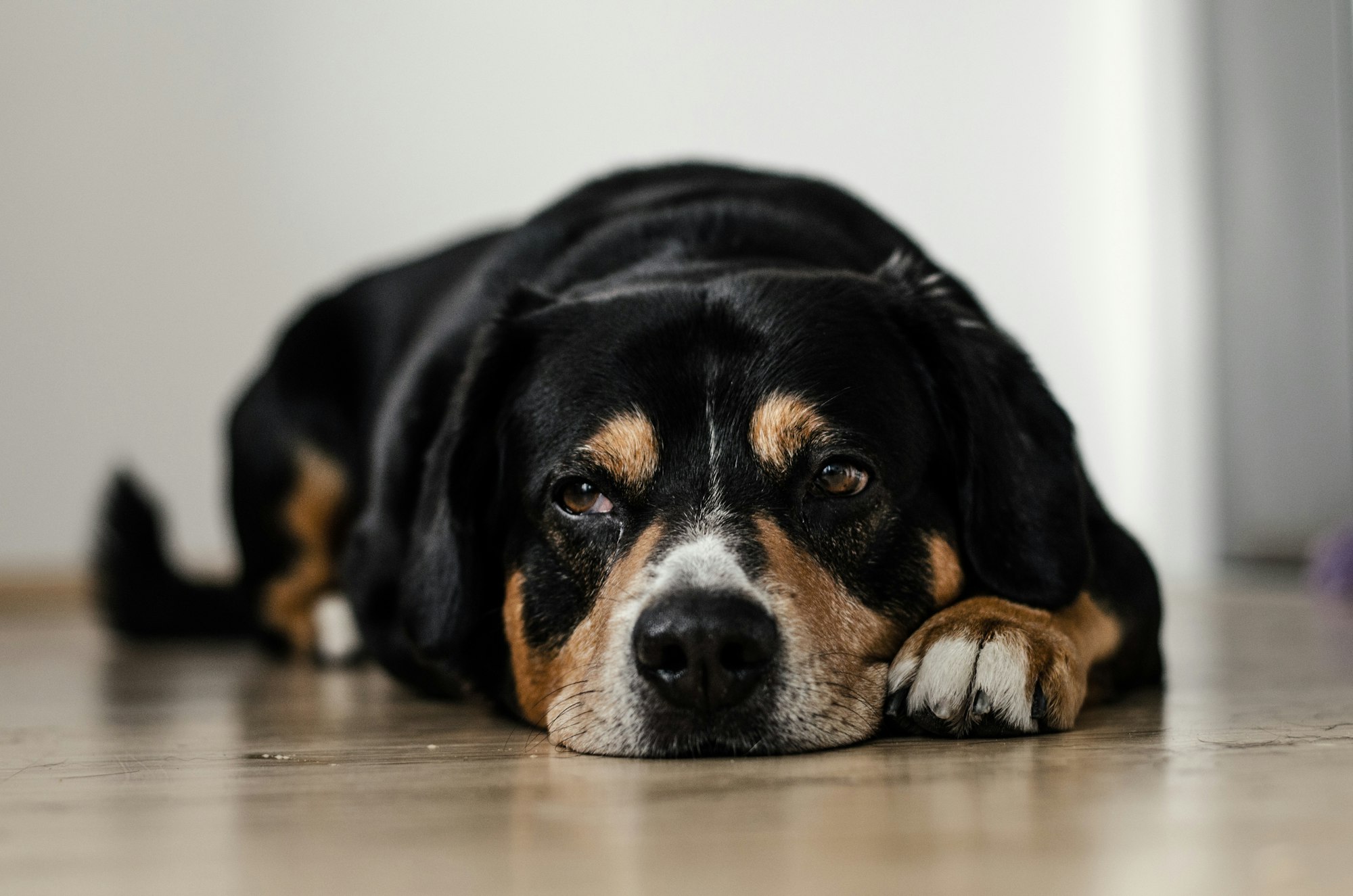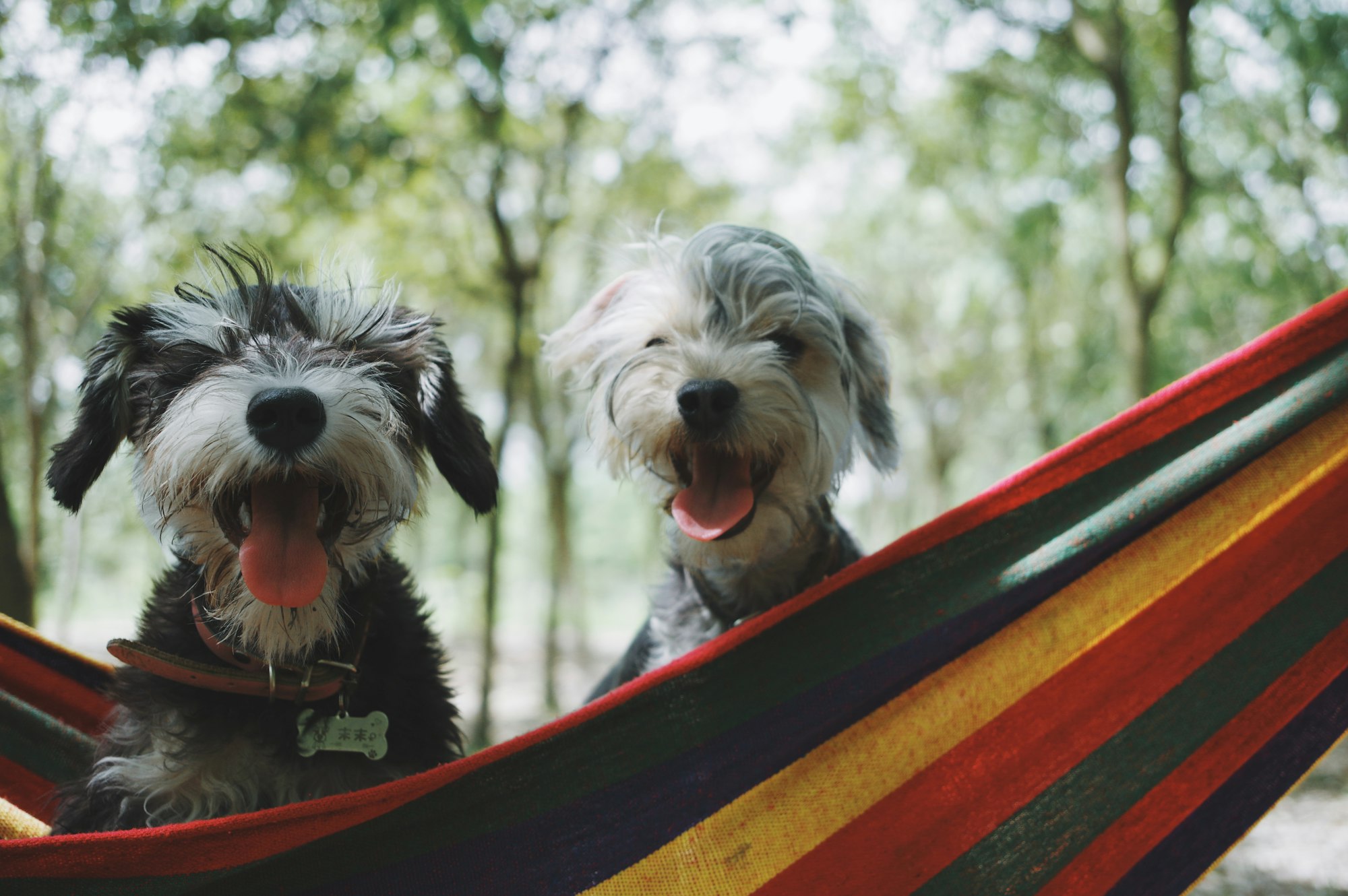Walking on a leash is an essential skill to teach your puppy or dog in order for them to behave well during outdoor walks. However, this doesn't happen overnight. It requires proper and consistent dog leash training techniques to help your dog understand how to politely walk on a leash.
As to when to start teaching your pooch the skill, the answer is as soon as possible because it will be easier to train a puppy than an adult dog. Meanwhile, if your dog is an adult already, it's never too late. Leash training a puppy or dog is necessary, and while it may be difficult at first, it is something that you will definitely appreciate as you go walking with your dog in the days, weeks, and years to come.
Stop Googling - Ask a Real Vet
Leash Training a Puppy or Dog
For your convenience, we've compiled all the helpful recommendations on leash training in a step-by-step guide on how to leash train a puppy or a dog.
1. Introduce your dog to a collar/harness & leash
When it comes to training your dog to walk on a leash, a good starting point is to introduce the collar or harness to your pup first. Choose one that is lightweight and comfortable and let them get used to wearing it. If you are using a collar, ensure that it fits well, having just enough space to fit two of your fingers.
Check the collar every day to make sure that it fits your dog comfortably. When selecting a leash, it's best to pick one that matches the size and weight of your dog. Before you attach the leash to your dog's collar or harness, allow them to smell it first. And after they've been accustomed to the smell, you can then put the leash on.
2. Use a sound cue
Teach your dog a cue in the form of a sound that means that they are about to get a treat from you. For example, some people may use specific words like "yes." Some snap their fingers or make a distinct sound with their mouth. There are also those who use a clicker during training. These are sound cues that you can use during leash training or other training sessions with your dog.
Go in an area in your home where there are no distractions, with a collar and a leash worn on your dog, then make the sound cue. When your dog turns to look at you, give him a treat. Upon doing this several times, your puppy would naturally come to you (apart from looking at you) to anticipate the reward.
3. Teach your dog to come towards you
With their collar and leash worn, take a few steps back and reward your dog with a treat when they reach you. Use the sound cue while doing this to make it more effective. Keep these sessions quick not to wear out your dog, especially when it comes to puppies who can't keep their attention for long periods.
4. Practice walking your dog in your backyard or garden
To walk your dog, the first thing to do is to attach the lead to their collar. This will be a new experience for your dog, and they may feel uneasy at first. In fact, you might notice that your puppy or dog would try to wiggle to free themselves from their collar. What you can do to distract them is to offer some treats or play with them and gently pat them when they don't try to pull.
If you see them touching their collar, distract them again with treats or play. When your dog is not paying attention to the collar and leash, you can then remove them. In the next few days, gradually increase the time your dog wears the collar and lead until they get used to it.
At this point, you can then follow your dog with a leash as you walk them around your backyard or garden while making sure that you don't pull the leash so that it is barely noticeable to your dog. After a few minutes of walking, remove the leash and engage your dog with play before attaching the leash again for another round of walking. Remember to keep the leash on slack so that your dog feels no resistance from it.
5. Make leash time a positive experience for your dog
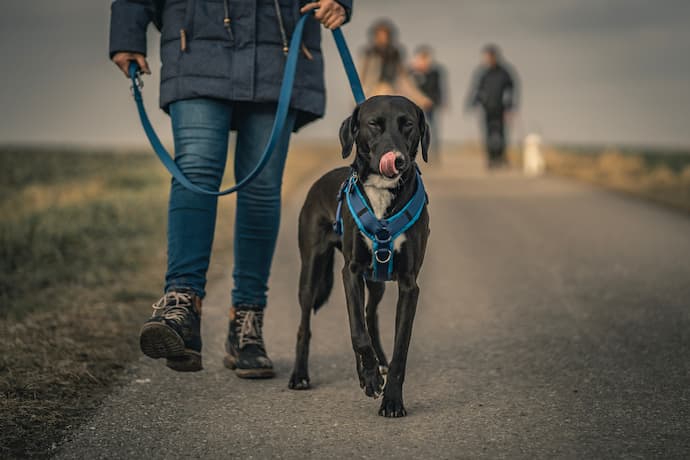
It is essential to create positive experiences for your dog so that a leash is represented as something fun and enjoyable rather than stressful. When the training leash is attached, you can use toys and treats to help your dog enjoy the experience. Doing so helps your dog associate the leash with having a good time, making them more obedient while on it.
6. Time for the great outdoors
After your dog has become comfortable while on a leash, it's time for them to explore the wonders of the outdoors. Remember, however, that it isn't the same as the controlled environment at home. The outdoor walk offers new sights, smells, sounds, and sensations for your puppy. Your dog might feel a little overstimulated initially, but there is no need to fret since it's just natural for them to feel that way upon experiencing something new.
Keep the initial walks quick at first. And if your puppy becomes distracted, step back and use your sound cue to get their attention. While it may be challenging at first because of a lot of stimuli, remember to be patient with your dog. After they come towards you, reward the good behavior with a treat.
If nothing else really worked for your dog, try getting a no-pull harness but remember that you need to use it carefully.
Troubleshooting
As your puppy gets older, it's possible to encounter challenges along the way. If you're having some difficulties with dog leash training, here are some tips that you can apply:
What to do if your dog...
Pulls
When your dog starts to pull in the opposite direction, stand still and don't budge until your dog goes back. Don't yank or drag on the leash. If your dog has a tendency to pull, you can use front-hook harnesses that are designed to keep dogs from pulling.
If you're not a fan of front-hook harnesses, remember that leash training a dog should involve no pulling or direct punishment on your side. A harness or a leash is a communicative tool between a pup and you, and thus you should discipline a dog without punishment. So be gentle with your dog, even when they're pulling too much.
Barks
Some dogs tend to bark on other dogs they encounter along the way. In some cases, this may be caused by a lack of physical activity, so remember to provide your dog with enough mental and physical stimulation. If they still bark even with enough exercise, you can maintain a certain distance and offer them a treat before they even get a chance to bark.
That way, your pup will be trained to turn to you whenever a dog is approaching. If the barking is combined with pulling you in the direction of another animal, use a sound cue. Distraction and positive reinforcement always work well in leash training, even for an adult dog.
Lunges
In instances when your dog goes after something during walking encounters, take action by offering them a treat before they have an opportunity to lunge. This is a typical behavior in herding breeds, but any dog can exhibit this whenever they encounter something that stimulates them.
If lunging is also expressed with a dog pulling on a leash, reduce pulling on your side and use sound cues. If this behavior just doesn't go away, consider getting a comfy front clip harness, which prevents pulling and lunging.
Lags Behind
If your dog lags behind, don't pull and drag them, as this might make them even more resistant to follow the lead. Instead, you can follow the dog at first and praise them while they are moving. If your dog still doesn't want to move, try to encourage them (without pulling on the leash) acting excited as you invite them towards you.
Reward your four-legged friend with a treat if you see any positive change. Sometimes, dogs tend to lag behind just to sniff around or when tired. Either way, pulling on the leash is not the best choice you can make on your side.
Chews a leash or a collar
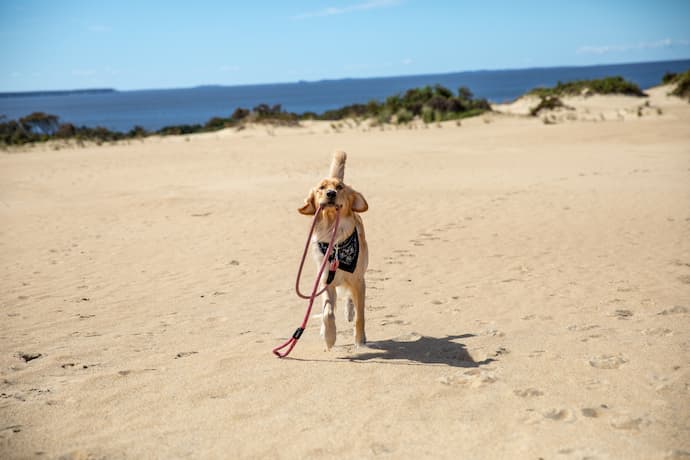
Sometimes, your dog chews on a leash or a collar. Some see it as a sign that a pup doesn't like this accessory but don't take it that seriously. Gnawing on particular objects, such as a leash or harness, might actually signal that your dog gnaws on other objects as well. If this destructive behavior persists, consider our training tips to stop your Fido from chewing on a leash or other objects.
Conclusion
Leash training a puppy is not instantaneous. You'll be able to lessen the treats as well as the need for troubleshooting as your dog gradually learns how to walk loosely on the lead. Teaching a puppy to walk on a leash might also be challenging because your four-legged friend needs more time to adjust and get used to a harness.
Remember to be patient and keep it a positive experience to teach your dog to politely walk while enjoying your company at the same time.
Was this article helpful?
Help us make our articles even better

